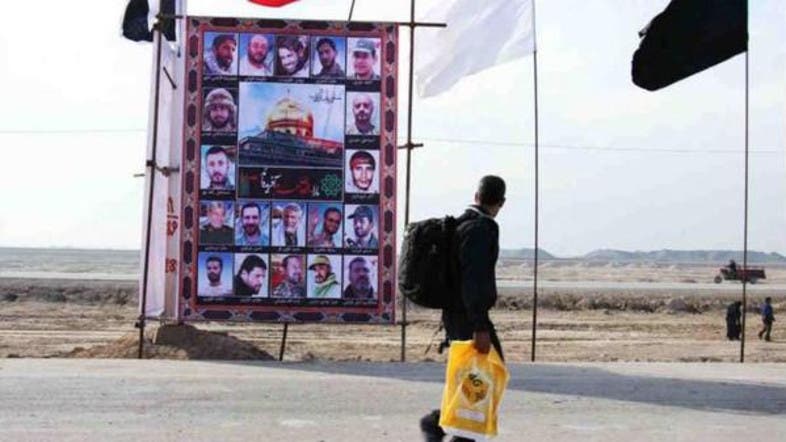For those who believe President Obama is a lame duck simply waiting for his departure from the White House and the commencement of wealth pursuits, there is a likely surprise coming. The president has signaled that he may seek a U.N. Security Council Resolution which embodies a Palestinian state with pre-1967 lines, notwithstanding a different stance by President-elect Donald Trump.
This remarkable act would unequivocally betray the U.S. policy of vetoing anti-Israel resolutions. It would also attempt to make “illegal” Israeli buildings in east Jerusalem, Judea, and Samaria, and set in place a stance that President Trump would be hard pressed to overturn. Recently President Obama, in language that can only be regarded as hostile, said that settlement construction, even if regarded as an organic expansion of overcrowded areas is unacceptable. More here.
HRW advises UN on settlement boycott database
Human Rights Watch (HRW) has written to the UN Office of the High Commissioner for Human Rights (OHCHR), with recommendations for constructing the database of settlement businesses that was mandated as part of a Human Rights Council Resolution adopted in Geneva in March this year.
The letter, sent by HRW’s Israel/Palestine Advocacy Director, Sari Bashi, to Zeid Ra’ad Al Hussein,
High Commissioner at OHCHR, offers guidelines for interpreting the resolution, and also singles out three specific institutions for inclusion: Heidelberg Cement, RE/MAX, and FIFA.
As per the resolution, OHCHR is currently compiling a database of business enterprises involved in Israeli settlement activities in the occupied Palestinian territory and occupied Syrian Golan.
In their letter, HRW “outline[s] the kind of business activities that we believe meet three of the criteria outlined in the Resolution”, including:
“the provision of services and utilities supporting the maintenance and existence of settlements, including transport”;
“banking and financial operations helping to develop, expand or maintain settlements and their activities, including loans for housing and the development of businesses”;
“The use of natural resources, in particular water and land, for business purposes”.
HRW also “describe[s] the kind of institutions that, if found to engage in the above-stated activities, should be eligible to be listed in the database”, including non-profit organisations that have responsibilities under the UN Guiding Principles on Business and Human Rights.
Finally, HRW names three institutions it recommends be included in the database.
The German multinational Heidelberg Cement, through its subsidiary, Hanson, owns a West Bank quarry for which it pays royalties to the Israeli occupation authorities and “municipal taxes to the settlement Samaria Regional Council.”
RE/MAX, meanwhile, “is a US-based international real-estate brokerage franchise” and the owner of the global franchise network. “Its Israeli franchise, RE/MAX Israel, has a branch in the settlement of Ma’aleh Adumim and markets or has marketed homes in at least 17 additional settlements.”
Finally, HRW also singles out FIFA for inclusion, a body which, through its affiliate, the Israel Football Association (IFA), “is organising matches in Israeli settlements in the West Bank on land that has been unlawfully seized from Palestinians.”
****
It has been said to follow the money and this is easy due to the wicked agenda of George Soros. He is the largest funder of HRW.
Financier and philanthropist George Soros of the Open Society Foundation announced in 2010 his intention to grant US $100 million to HRW over a period of ten years to help it expand its efforts internationally. He said, “Human Rights Watch is one of the most effective organizations I support. Human rights underpin our greatest aspirations: they’re at the heart of open societies.” The donation increases Human Rights Watch’s operating staff of 300 by 120 people. The donation was the largest in the organization’s history.
Meanwhile, Donald Trump’s son-in-law is being designated the point person to resolve the political and territory conflicts between Israel and the Palestinians. Haaretz reports American progressives are building a guide to fully oppose all things Trump so it could be the threat has been delivered early and aggressively.
Exactly how deep this political debate will go remains to be determined however, there are many in Congress that stand with the Palestinians and support efforts to the resettlement efforts.
Since June 2007, these U.S. policy priorities have crystallized around the factional and geographical split between the Fatah-led Palestinian Authority (PA) in the West Bank and Hamas in the Gaza Strip. From FY2008 to the present, annual Economic Support Fund (ESF) assistance to the West Bank and Gaza Strip has averaged around $400 million, with that amount divided between U.S. Agency for International Development (USAID)-administered project assistance (through grants and contracts) and budget support for the Palestinian Authority (PA). Annual International Narcotics Control and Law Enforcement (INCLE) non-lethal assistance for PA security forces and the criminal justice sector in the West Bank has averaged around $100 million. In line with Obama Administration requests, baseline funding levels for both ESF (including ESF-Overseas Contingency Operations, or ESF-OCO) and INCLE have declined since FY2013, with FY2017 requested annual assistance amounts of $327.6 million for ESF and $35 million for INCLE. Because of congressional concerns that, among other things, U.S. aid to the Palestinians might be diverted to Palestinian terrorist groups, the aid is subject to a host of vetting and oversight requirements and legislative restrictions. Additionally, the United States is the largest single-state donor to the U.N. Relief and Works Agency for Palestine Refugees in the Near East (UNRWA). The full summary is here.

